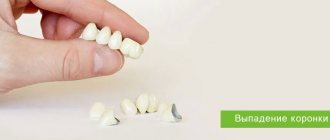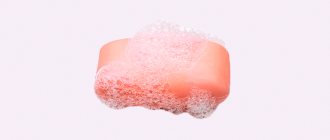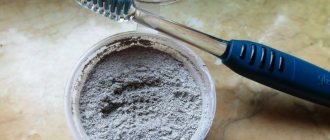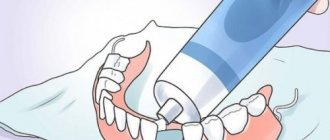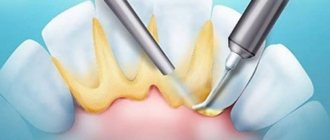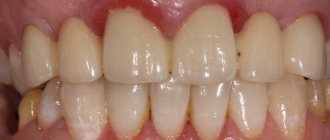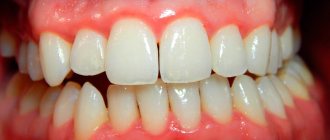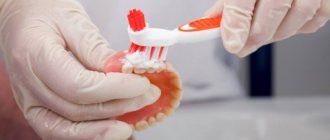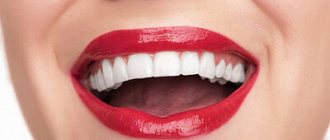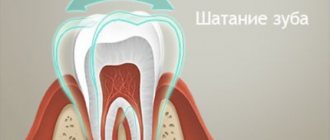Purpose of glue in prosthetics
Creams and adhesives in dentistry are used both for fixing dentures and as auxiliary materials in combination with other fasteners to ensure optimal strength and stability of the structure.
Suitable for attaching removable dentures made of plastic, nylon and other materials. Apply in the following cases:
- regular fixation of removable structures;
- temporary fixation of fixed prostheses when they break for the period of replacement;
- fixation of the crown when the cement underneath is destroyed;
- ensuring a tighter fit of the crowns and preventing chafing of the gums.
The adhesive is selected based on the duration of fixation, consistency, the presence or absence of flavorings in the composition, the individual characteristics of the oral cavity and the type of prosthetic structures.
Repair of dentures
General dentist Viktoria Aleksandrovna Vetrenko tells. The doctor conducts an appointment in orthopedic dentistry.
Daily chewing stress, inappropriate hygiene products, improper care or injury can lead to failure of the orthopedic structure.
Why does a denture break?
Here are the most common causes of breakdowns:
- Poor quality prosthesis care;
- Excessive chewing load on the denture;
- Injuries, blows;
- Falling of the prosthesis onto a hard surface;
- Destruction or loosening of the supporting tooth;
- The service life of the prosthesis has expired;
- Initial design defects or poor quality materials;
- The technology for fixing the prosthesis is broken.
What to do if your denture breaks?
Contact the dental clinic and describe your situation. As a rule, administrators know which problems require immediate solutions. They will tell you whether you should wait for a convenient time with your doctor or whether it is better to make an appointment at the earliest available time.
If a crack appears on a denture of any kind, you should see a doctor as soon as possible. Try to use the denture as little as possible: chew on the other side of the jaw, and remove the denture if possible.
Which doctor repairs dentures?
To have your denture repaired, contact your orthopedic dentist . He can solve some minor problems right there at the reception. Others will require the work of a dental technician. And if retreatment of abutment teeth is required, the doctor will refer you to a dentist-therapist, but will first cover the abutment teeth with temporary material to isolate them from the chemical effects of food.
Urgent repairs - if there is a laboratory
Check with the administrator whether this clinic or this branch has its own dental laboratory. Then the doctor will be able to immediately put the prosthesis to work, and after 1-2 hours the structure will be repaired and returned to its proper place in the oral cavity.
Ceramic crowns, bridges, veneers and inlays
Here we will talk about situations where repair of permanent structures made of metal ceramics, press ceramics and zirconium dioxide is required.
Appearance has deteriorated. During wearing, scratches, yellowing and other aesthetic defects may appear. The doctor will quickly fix this at your appointment: he will clean and polish the surface.
Cracks and chips . If the supporting tooth is not damaged, then the help of a technician is not required to repair a chipped ceramic or crack. The doctor will glue the crack, return the fallen piece to its place, fixing it with a composite, or recreate the lost fragment from photopolymer material. It is important to understand that after such repairs the prosthesis will be less reliable, and another chip may soon occur.
Loss, decementation. These are cases when the prosthesis is not damaged, but has fallen off the supporting teeth. The doctor will examine the condition of the teeth: if they have not suffered much from contact with the external environment, then the prosthesis can often be glued back. If it was not possible to notice and eliminate the problem in time, because of which the tissue damage went deep, you will have to first treat the teeth, and then make a new prosthesis in the laboratory and install it. The same applies to situations when a crown or other prosthesis has become mobile and dangles on the tooth.
If you see that the crown has fallen off or is loose, consult a doctor as soon as possible. These are the most urgent problems.
Relocation
if the prosthesis becomes uncomfortable over time, its shape can be adjusted
In half
Even if the prosthesis is completely broken, it can be repaired
Removable dentures
Now let's look at what can happen to a prosthesis made of acrylic, acry-free or elastic acrylic, as well as temporary plastic structures and clasp dentures. But nylon prostheses, unfortunately, are almost impossible to repair.
Loss of one tooth. An artificial tooth on a removable denture can chip or wear away from chewing. The new tooth can be glued in: they are standard and can be easily replaced in the laboratory. The same procedure occurs when, after a natural tooth falls out, it is necessary to install an artificial tooth on a prosthesis in its place.
Crack or fracture. Rigid dentures made of acrylic and plastic are more likely to chip than flexible ones. In the laboratory, removable dentures are repaired by milling the edges of the fracture and gluing them together with self-hardening dental resins or adhesives. However, if the cast frame of a reinforced prosthesis is damaged, then such a product cannot be repaired.
The fastening is broken. Fasteners may become bent, broken, or otherwise fail. This mount can be replaced or adjusted. If the prosthesis was fixed with locks, then the lock must be replaced. All these manipulations are carried out in the laboratory.
The prosthesis became uncomfortable. Most likely, the problem is not in the prosthesis, but in the changed contour of the gums. Strictly speaking, adjusting the prosthesis to the gum is not a repair; this procedure is called relining. It is carried out based on the results of a warranty examination, when the doctor notices an insufficient fit. But if you feel discomfort before the examination, consult a doctor.
Prosthesis on an implant
The prosthesis broke. A removable denture on an implant is repaired in the same way as dentures on teeth.
The abutment broke. This element connects the prosthesis and the implant and can be replaced. This will take several days, as a standard abutment of the required manufacturer and size must be ordered and delivered.
If the patient had a digital individual abutment installed, and its parameters were saved in the laboratory database, then a replacement can be made immediately, within 2-3 hours.
Repairing a prosthesis at home is dangerous
What happens if you try to repair the prosthesis yourself? In cases with fractures and cracks, patients sometimes try to seal the prosthesis themselves using office or household glue. Such adhesives are unsafe for health:
- may cause allergies,
- can lead to intoxication of the body,
- cause inflammation of the gums,
- corrode elements of the orthopedic structure.
Only a doctor can restore the shape and smoothness of the prosthesis, and ensure proper fit and closure with the opposing teeth. Unprofessional repairs will lead to health problems, and the prosthesis will most likely have to be completely replaced rather than repaired.
As soon as you notice problems with your denture, consult a doctor immediately. Some breakdowns need to be repaired urgently, otherwise the harm to health and financial costs will increase.
| Price, ք | With a discount, ք |
| Repairing a broken base or welding a clasp or tooth | 2115 |
| Installation of new artificial teeth on removable dentures (1 tooth) | 375 |
| Relining of a removable denture with Mucopren material (Germany) | 2000 |
| Restoring one chip of metal ceramics with photopolymer material | 3300 |
Fixing cream "Protefix"
A German-made product with a dense consistency and easy application. It has a number of important advantages:
- ease of application due to high viscosity;
- absence of harmful chemical components, dyes and fragrances in the composition;
- does not change the taste of food and drinks;
- economical use of funds;
- guaranteed stable fixation for 12 hours;
- immunity to salivation;
- fast adhesion time - it only takes 5 minutes to secure the prosthesis in the mouth;
- antiseptic effect.
The drug has almost no contraindications and can be used for both permanent removable systems and temporary ones.
Why do crowns fall out?
This may be due to:
- Loss of cement elasticity, causing the crown to become uncemented.
- Damage to the prosthesis due to heavy loads when chewing or biting off hard food.
- By installing temporary cement that has not been removed.
- The beginning of the appearance of caries at the edges of the tooth.
- Frequent consumption of viscous foods - toffees, chewing sweets.
- Installing the product on a small tooth.
Whatever the reasons for the loss, this defect will not be attractive. And correctly selected glue will eliminate the disadvantage.
Cream "Korega"
Products from an Irish manufacturer. Provides convenience and comfort throughout the entire period of use, effectively prevents displacement of the prosthesis and allows you to lead a full life without embarrassment and awkwardness.
The composition has many advantages:
- convenient packaging with dispenser;
- dense consistency, most convenient for application and uniform distribution;
- ensures a tight fit and prevents food from getting under the dentures, thereby counteracting infections and bad breath;
- innovative formula without zinc;
- several release options to choose from, including in the form of a cream with a refreshing effect;
- neutral taste, does not change the taste properties of food;
- guarantee of stable fixation for 12 hours;
- when hardened, it takes on a gum shade that is as close as possible to the natural shade.
Before using the cream, the denture should be thoroughly cleaned; the manufacturer produces cleaning tablets specifically for this purpose.
Terms of use
A dental crown can solve the problem of tooth loss, but it can fall out at any time. In this case, glue will help, but it must be used correctly so as not to harm yourself. To do this, follow the instructions for use:
- The fallen denture must be cleaned of food, plaque and old glue. Use dental floss or a brush for cleaning. If cleaning is performed above the sink, you must first plug the drain hole so as not to lose the crown.
- Then you need to brush your teeth, especially the one from which the crown was removed. Unpleasant sensations may appear, since the tooth has been ground down and will be very sensitive. This phenomenon is considered normal. Don't press it too hard. It is desirable that the brush has soft bristles.
- The cleaned crown and tooth must be dried. Sterile gauze is used for this purpose. A bandage is suitable instead. You should wipe the surface of the tooth and crown carefully to avoid any unpleasant sensations.
- A small amount of glue is applied to the crown and then installed in the desired location. During the entire process, it is necessary to monitor actions through the mirror. This makes the work much easier. If the crown was in a hard-to-reach area, the procedure must be performed with someone's help.
- After installing the crown, you need to slightly clench your jaws. This is necessary to determine whether the prosthesis is installed in the desired position. This position must be held for 1-2 minutes until the glue dries. The wait may be less, it all depends on the means.
- Using dental floss, you need to carefully remove any remaining adhesive from your teeth. It is important that the movements are smooth and not forceful so that the crown does not fall out. This completes the procedure.
Cream for fixing dentures “President Garant”
This is an Italian-made product, comes in a standard tube, is easy to apply, fills all gaps and voids, ensuring the tightest possible fit.
Other benefits:
- securely fixes structures for up to 36 hours - an ideal solution for trips, business trips and lengthy events;
- Available in two types: neutral and mint flavor;
- protects soft tissues from chafing;
- the presence of natural plant extracts in the composition;
- compatible with any prosthetic structures;
- no side effects;
- simple and quick installation.
President Garant fixation cream is not destroyed by any food or drink, which ensures guaranteed fixation of the denture
Most popular creams have similar composition and qualities. However, when choosing an adhesive, you should be guided by the dentist's recommendations, this guarantees strong fixation and safe use, taking into account the individual characteristics of the patient.
Advantages of prosthetic crowns
Some patients do not pay enough attention to the fact that the crown fell off. Meanwhile, even the absence of one unit poses considerable dangers for the body. Uneven load on the elements leads to grinding of adjacent molars. Poorly chewed food leads to gastrointestinal problems. Violation of aesthetics gives rise to complexes and reduces self-esteem. Bone atrophy and dysfunction of the temporomandibular bone may develop. These problems will inevitably arise if the crown falls off and is not restored for a long time. The same aspects are reasons for prosthetics. It is no secret that some people do not visit the dentist for years and are missing one or more teeth. If a defect is invisible externally, this does not mean that you can forget about it. A crown falling off is not the worst thing that can happen. But there are many more undeniable advantages of fixed prosthetics.
- Possibility of restoration of any number of units.
- Restoring an attractive appearance.
- A natural color that matches the hue of its elements.
- Resistant to high chewing loads.
- Strength, practicality, safety, durability.
- No discomfort or pain.
- Easy to install, easy to maintain every day.
- Without allergies and irritation of soft gum tissue.
IMPORTANT! A reliable prosthesis not only completely restores chewing functions and gives you the opportunity to smile dazzlingly, but also protects the tooth from the penetration of bacteria from the outside. Due to its tight fit to the surface of the molar, the artificial fragment becomes an insurmountable barrier to dangerous microbes. Therefore, even if part of the crown has become loose or fallen off, you should immediately visit a doctor.
What is needed for a quick repair?
The best option is to visit the pharmacy and purchase one of the dental adhesives designed for repairing dentures:
- ROCS is an air-curing plastic with good adhesive properties and high strength after hardening. When carefully applied to the gluing area, no additional sanding is required;
- “Coracryl” is a two-component composite material that hardens in air. The composition is prepared immediately before application to the broken prosthesis;
- “Protacryl”, “Redont” - powder and liquid for its dissolution. The resulting liquid plastic hardens under the influence of moisture contained in the air. Composition for emergency repair of acrylic dentures.
Restoration methods
Shallow cracks and abrasions are eliminated by polishing the ceramic surface. Small chips are restored using light-curing composites. This is the most common way to restore an orthopedic system without replacing it. Restoration of metal ceramics includes the following stages:
- The extension area is isolated from moisture;
- grind the chipped area to improve the adhesion of materials;
- after drying, a composite material is applied to the defect layer by layer, each layer is illuminated with a UV lamp;
- Upon completion of the extension, the area is ground and polished to give a natural shine, the appearance of a crown.
Repairing a metal-ceramic chip takes about 30 minutes. Restoration extends the life of the prosthesis, restores the original appearance, and returns the aesthetics and functionality of the dentition. However, repair of chips on metal ceramics is carried out without a guarantee, since there are many negative factors that affect the service life of the restoration.
If a metal-ceramic crown breaks off, there is no need to throw away the fragment. It is likely that the doctor will be able to use it to restore the integrity of the lining. In case of extensive damage, when a significant part of the metal is exposed, or chips of the lining of the contact surfaces, another option is required - replacing the damaged structure with a new one.
In what cases is restoration by installing a crown on a tooth indicated?
The procedure for installing a crown on a tooth has its own indications, including:
- Destruction of the crown part of the tooth by the carious process by more than 50%;
- Traumatic damage to a dental unit, in which its roots remain viable and are not damaged;
- Aesthetic defects that cannot be eliminated using other technologies: noticeable chips in the enamel, discoloration of the enamel coating, cracks.
A dentist may recommend installing temporary crowns for a patient with periodontitis: the procedure will help prevent further tooth loosening and prevent future tooth loss.
Restoration with crowns is contraindicated:
- For some blood pathologies;
- If you are allergic to local anesthetics;
- In the presence of chronic diseases of the body in the acute stage;
- In the presence of mental disorders.
Contraindications to the installation of crowns are identified during preparation for the prosthetic procedure and diagnostic studies.
WHAT ARE TEMPORARY CROWNS MADE FROM?
Typically, temporary crowns are made of special plastic, although sometimes acrylic plastics or modern composites are used for these purposes. The price of a temporary crown will depend on a number of indicators: • Time to make the crown; • Degree of protection of the ground tooth; • The rate of hardening of the material from which the crown is made; • Convenience and accuracy of tooth shape modeling; • Possibility of correction of an already made crown; • The degree of strength of the crown; • Life time.
The better the performance, the more expensive the temporary crown will cost.
Glue selection criteria
When choosing the appropriate denture adhesive for his patient, the doctor takes into account the characteristics of the oral cavity and his experience. But no one prevents the patient from choosing the right product for himself. Glue production occurs in three variations:
- liquid;
- medium viscosity;
- viscous.
The liquid composition has a higher consumption. But it is very convenient to use this remedy in the very first stages of wearing dentures. It takes a lot of time to fix the structure, so everything moves to a cream of a more viscous consistency.
Glue is applied to the structure in strips. There should be 3 or 4 of them. After attaching the prosthesis, the glue begins to be evenly distributed. If a person uses a prosthesis for the first time and has not yet gotten used to it, then his perception of taste is distorted. Dentists recommend initially avoiding flavored glue so as not to worsen the situation.
According to the manufacturers of fixing agents, the adhesion duration is 12 or 24 hours. But this time does not imply the influence of other factors, such as food intake, the chemical composition of food and laughter. If we refer to practice, the total duration of wearing a denture using glue is 9 hours. Each manufacturer has its own quality characteristics.
Is it possible to use Superglue?
Is Superglue suitable for these purposes? Some patients consider it one of the best means for fixation, but doctors do not share this opinion. And this is due to some reasons.
“Superglue” contains industrial components that not only fix dentures in high quality, but also lead to a strong toxic effect. As a result, a person may get food poisoning or allergies. This product does not have the required viscosity, so it cannot penetrate into chips on the tooth. This effect leads to new breakdowns and other shortcomings.
There is a big difference between the characteristics of the crown material and the physical properties of “Superglue”, so the use of such a product violates the integrity of the structure. Often people do not treat the bonding area before applying the product, which leads to the appearance of harmful microorganisms, which causes inflammation.
Contraindications
Denture adhesive is a completely safe product that can be applied by absolutely anyone who does not have individual tolerance. Be careful to apply the product in small quantities, otherwise when you press the jaws it will peek out from under the denture. When used correctly, there is no harm to the body or the structure itself. Only occasionally can an overdose occur, which is characterized by the following symptoms:
- feeling of nausea;
- increased salivation;
- drowsy state;
- feeling of weakness;
- dizziness;
- allergic reaction.
If one of the presented signs occurs, you must immediately visit the clinic.
To protect yourself from such phenomena, you need to take certain precautions. You can use a fixation device only after it has been recommended by a doctor. Use it strictly according to the instructions. Store it in a place where a child's hand cannot reach. The packaging should not be exposed to moisture, and storage should take place at room temperature. These rules are not that difficult to follow, but they will allow you to protect yourself from adverse events and achieve reliable, long-term fixation of the dental structure.
Sources used:
- First St. Petersburg State Medical University named after. acad. I.P. Pavlova
- Official website of the Russian Dental Association
- Milward, P.; Katechia, D.; Morgan, M. Z. (November 2013). "Knowledge of removable partial denture wearers on denture hygiene". British Dental Journal.
Relevance of the problem – diversity of species
Dentistry is one of the oldest branches of medicine. Oddly enough, Pithecanthropus, Neanderthals, and our direct ancestors, the Cro-Magnons, had teeth pain. Already at the earliest stages of human history, the problem of replacing (prosthetics) a lost or fallen tooth arose. Until the beginning of the 19th century, practice followed the path of replacing like with like. The prosthesis was either a tooth of a deceased person of a suitable size or a tooth of an animal, ground to size. In rare cases, prosthetics were made from precious stones or metals.
Modern prostheses have incorporated technologies that make the design as light and cheap as possible. Ceramic metal, which was popular 10 years ago, is already a thing of the past. It is being actively replaced by polymers, which are not inferior in strength to metal and porcelain, but are an order of magnitude cheaper. In addition, most polymers can be repaired and restored in the event of loss of a component element. For each type of dentures, our own repair and restoration technologies have been developed. Not all of them can be reproduced at home.
MANUFACTURING TEMPORARY CROWNS
There are two main methods for making temporary crowns.
DIRECT METHOD
In this case, the temporary structure is made directly in the dentist’s office, and it takes no more than an hour: 1. First, the doctor makes an impression using silicone mass; 2. The tooth is prepared to the required size; 3. The dentist pours plastic into the prepared impression and then puts it on the tooth stump; 4. When the plastic hardens, the impression is taken, and the plastic structure remains on the tooth; 5. Using a frieze, excess material is ground off the temporary crown, and then it is ground and polished; 6. The finished crown is fixed on the tooth stump using temporary cement.
INDIRECT METHOD
The essence of this method is that the temporary crown, like the permanent one, is made in the laboratory. The impression is also taken with silicone mass, but then modeling takes place first with plaster and then with wax, and only after that the technician makes the crown itself. This method undoubtedly takes longer, but it allows you to make a temporary prosthesis more accurately, in accordance with the anatomical features of the jaw. In addition, such crowns are stronger and more reliable. Regardless of the material of the crown, it will be fixed with temporary cement. This cement is quite strong, but gradually dissolves under the influence of saliva. As a result, removing the temporary crown will not be difficult at all.
